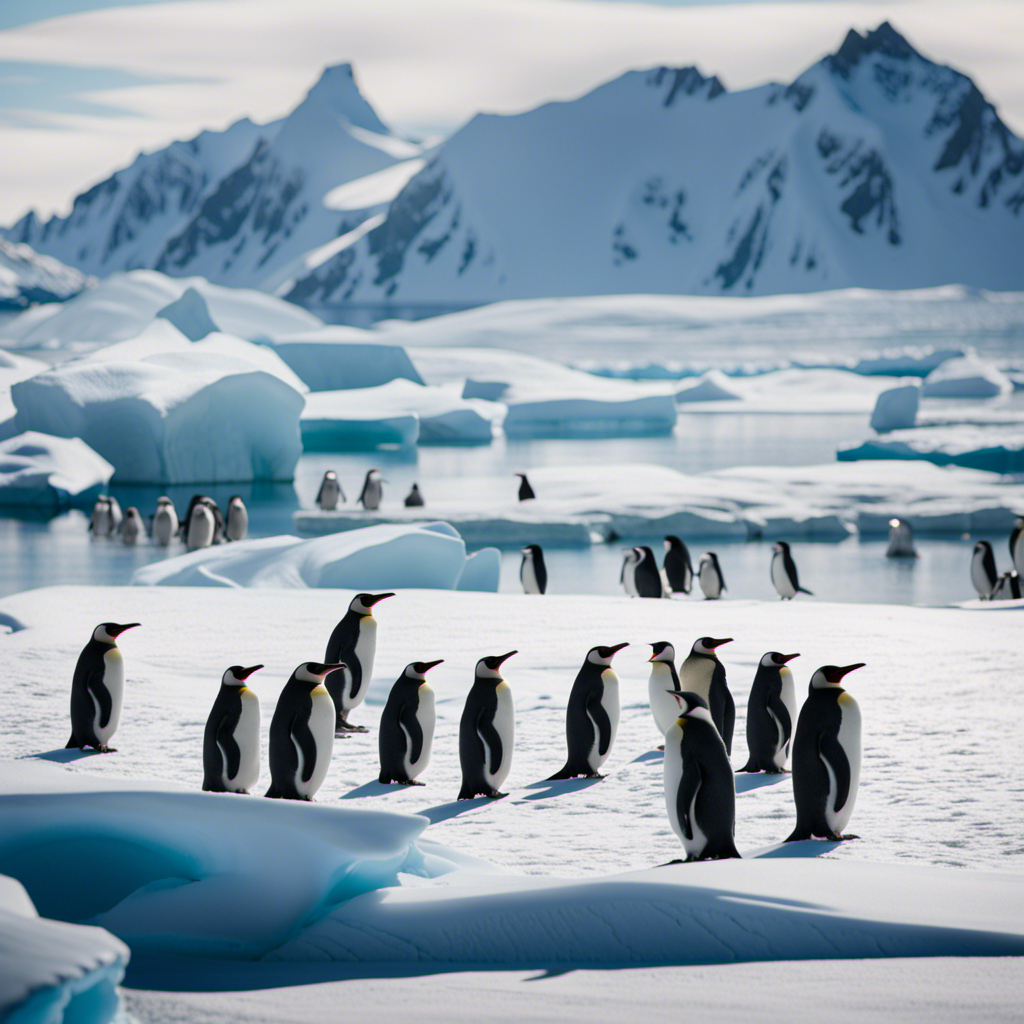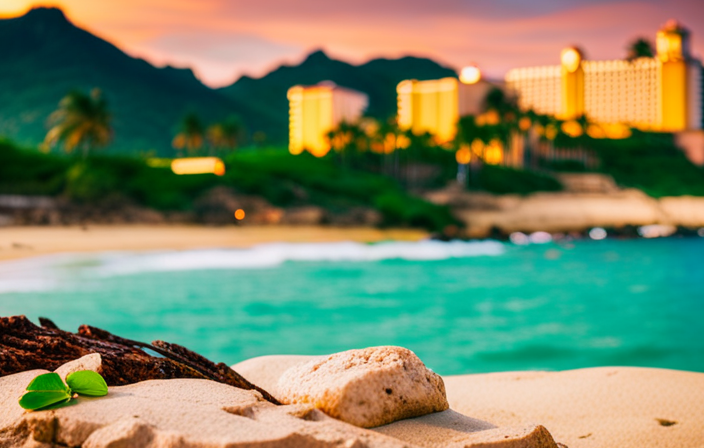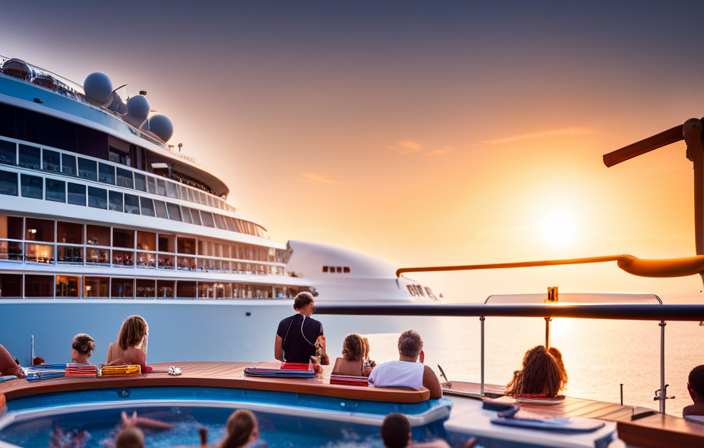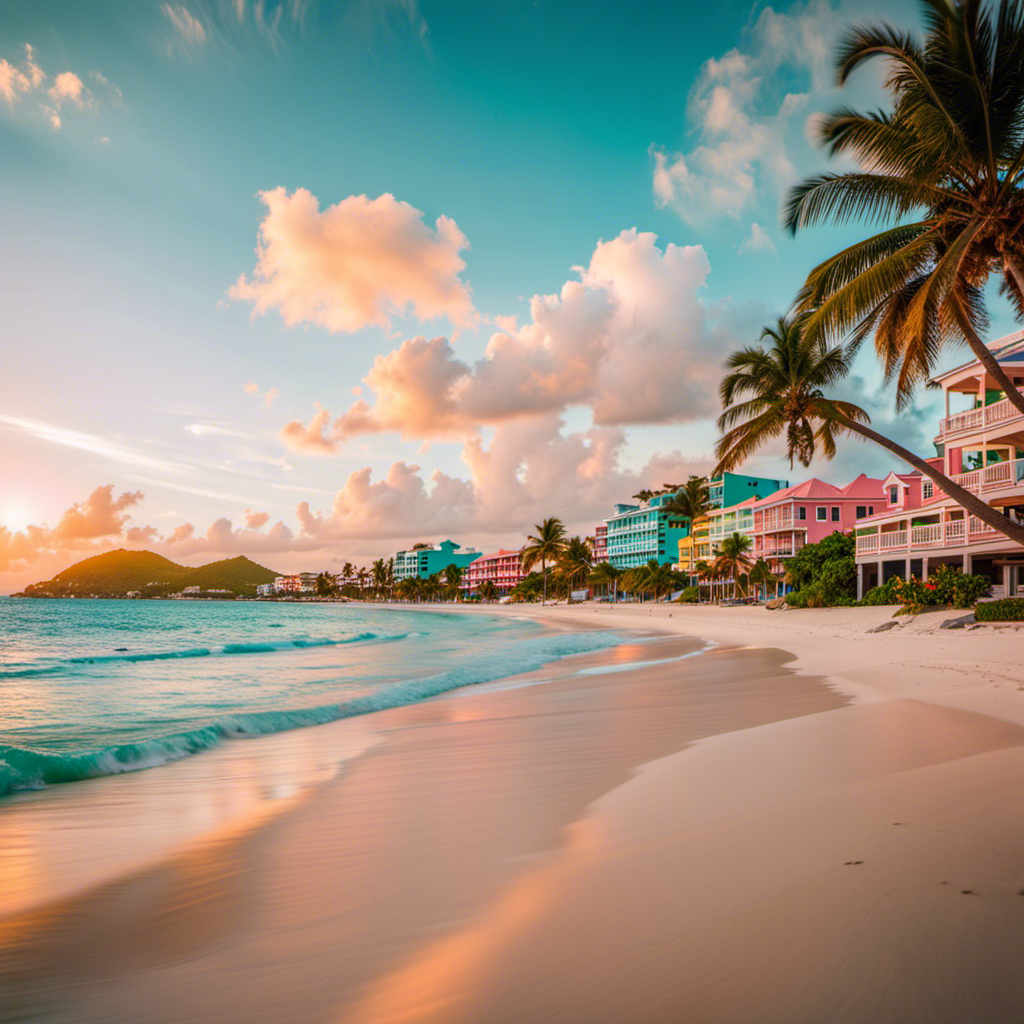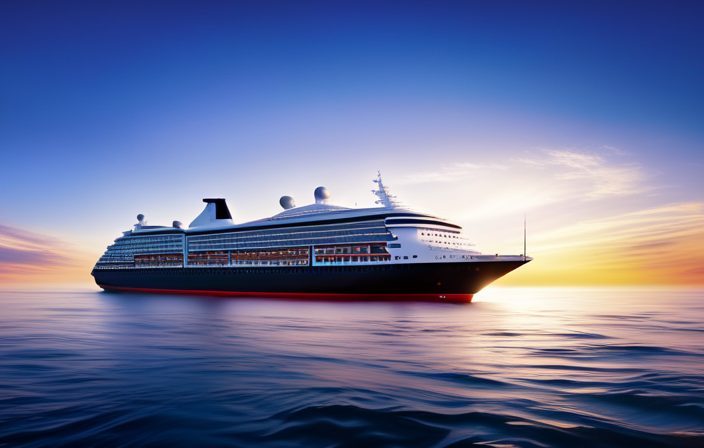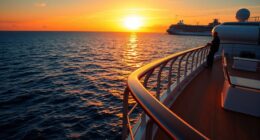Have you ever thought about discovering the magical marvels of Antarctica? Prepare yourself for an incredible journey as we set sail across boundless landscapes, colorful penguins, and splendid creatures that call out in this icy wonderland.
Picture yourself surrounded by towering mountains, glistening icebergs, and the delightful antics of Gentoo, Chinstrap, Adelie, and Emperor penguins. Get ready to witness humpback and minke whales dancing in the frigid waters, seals basking in the sun, and seabirds soaring through the crisp Antarctic air.
Join me on this captivating journey as we uncover the secrets of this remarkable continent.
Key Takeaways
- Endless daylight during austral summer provides a unique sense of the south polar latitude.
- Delightful penguins, including Gentoo, Chinstrap, Adelie, and Emperor breeds, can be observed in thriving colonies.
- The opportunity to witness whales, seals, and seabirds, including humpback, minke, and orca whales, Weddell seals, elephant seals, and various seabird species.
- The mesmerizing beauty and diversity of icebergs, with different sizes, textures, shapes, and stages of melting, offers a truly unique experience.
The Breathtaking Antarctic Scenery
I can’t believe the sight of peaked mountains gleaming white against the blue skies in Antarctica. The endless daylight during the austral summer truly gives a sense of the south polar latitude.
The landscapes here are awe-inspiring, with floating icebergs as high as cathedrals and scenic harbors framed by glaciers that calve with thunderous booms. The beauty of this place is unparalleled.
The vastness of the landscapes and the pristine nature of the surroundings create a sense of wonder and awe. It is like stepping into a different world altogether. The contrast between the white peaks of the mountains and the deep blue of the skies is mesmerizing.
Antarctica truly offers a visual feast for the senses, and experiencing these landscapes firsthand is an unforgettable experience.
Delighting in the Playful Penguins
Exploring the Antarctic landscape, I couldn’t help but be captivated by the waddling curiosity of the penguins. These delightful creatures, including Gentoo, Chinstrap, and Adelie penguins, thrive in colonies throughout the region.
Observing their behavior, I noticed the male penguins in full mating mode, chasing and courting females. They porpoise through the water, seeking and carrying food ashore. It is fascinating to witness their interactions and social dynamics within the colonies.
As I learned more about penguin conservation, I became aware of the delicate balance required to protect their habitats and ensure their survival. Efforts are being made to reduce human impact on their nesting sites and minimize disturbance to their natural behaviors.
Encounters With Majestic Wildlife
Observing the humpback whales breaching and the leopard seals hunting creates a sense of awe and admiration for the diverse wildlife in Antarctica. Whale watching in this region is a truly majestic experience.
Humpback whales, known for their acrobatic displays, breach out of the water, their massive bodies crashing back down with a thunderous splash. These magnificent creatures migrate to Antarctica during the austral summer to feed on krill.
Alongside the whales, seals and seabirds engage in fascinating interactions. Leopard seals, apex predators of the Antarctic, can be seen hunting with stealth and precision. They chase after porpoising penguins, creating a thrilling spectacle.
Seabirds, such as the skuas and petrels, dive into the water to catch fish, showcasing their remarkable hunting skills. These interactions between seals, seabirds, and whales are a testament to the intricate web of life in this unique ecosystem.
Marveling at the Magnificent Icebergs
Cruising through the icy waters, I marveled at the towering icebergs, each one a unique work of art sculpted by nature’s hand. These majestic formations are not only visually stunning, but also reveal fascinating insights into the melting patterns and underwater wonders of Antarctica.
As I observed these frozen giants, I noticed the different surfaces indicating stages of melting. Some icebergs had smooth, polished exteriors, while others displayed jagged edges, hinting at the relentless erosion caused by waves and currents. This melting process creates gurgling and popping air bubbles within the ice, adding to the mesmerizing soundscape of the Antarctic.
Below the surface, hidden from view, lies a whole new world of underwater wonders. These icebergs act as habitats for various marine species, providing shelter and food sources. Exploring these icy realms is an opportunity to witness the delicate balance of life in this extreme environment.
Immersive Education and Exploration
Immersing myself in the educational programs provided an opportunity to deepen my understanding of Antarctica’s history, marine biology, and geology. Through immersive learning, I uncovered hidden treasures of knowledge and experienced the wonders of this unique continent firsthand.
The history lectures transported me back to the heroic age of exploration, where I learned about the expeditions of Shackleton and the hardships faced by early explorers.
The marine biology and ornithology lectures allowed me to identify different species of penguins, whales, seals, and seabirds, and understand their vital roles as predators in this pristine ecosystem.
The geology and ecology programs revealed the fascinating geological formations and the delicate balance of life in Antarctica.
Photography sessions enabled me to capture the breathtaking beauty of this frozen landscape, while becoming an Antarctic Ambassador through my newfound knowledge and experiences.
Immersive learning in Antarctica truly uncovered hidden treasures and left me with a profound appreciation for this extraordinary place.
Capturing the Beauty of Antarctica
Exploring Antarctica’s mesmerizing landscapes, I eagerly captured the breathtaking beauty of icebergs, mountains, and glaciers through my camera lens. The serene atmosphere enveloped me as I embarked on my journey to document the wildlife interactions in this pristine environment.
- Penguins waddled curiously towards me, their playful antics providing endless entertainment.
- Majestic whales breached the surface, their tails glistening in the sunlight.
- Seals basked lazily on ice floes, engaging in their intricate mating rituals.
- Seabirds gracefully dove into the crystal-clear waters, emerging with their catch.
As I clicked away, each snapshot became a testament to the fragile harmony of this icy realm. Capturing the serenity and tranquility of Antarctica, my photographs aimed to raise awareness and appreciation for this unique habitat.
Documenting the wildlife interactions, I hoped to inspire others to protect and preserve this extraordinary ecosystem for generations to come.
Exploring History and Expeditions
As I delved into the rich history and expeditions of Antarctica, I was captivated by the tales of Shackleton’s courageous journeys, the remnants of whaling stations, and the significant role of research stations in advancing our understanding of this remote continent.
Shackleton’s legacy looms large in the annals of Antarctic exploration, with his legendary endurance and leadership during the ill-fated Endurance expedition.
The whaling history of Antarctica is a fascinating chapter, as these stations once dotted the icy landscape, harvesting the abundant marine resources that thrived in these frigid waters. Today, these remnants serve as a reminder of the human impact on this pristine environment.
The research stations, on the other hand, play a vital role in scientific discoveries, helping us unravel the mysteries of Antarctica’s unique ecosystems, climate, and geological formations. Through their efforts, we gain valuable insights into the delicate balance of this remote continent and the impacts of human activity.
Discovering the Marine Life of Antarctica
I was amazed by the diverse array of marine life that I encountered during my time in Antarctica. The marine biodiversity in this icy region is truly extraordinary. Conservation efforts are crucial to protect the fragile ecosystems and ensure the survival of the species that call these waters home.
Antarctica is home to magnificent creatures such as whales, seals, and seabirds. It is not uncommon to spot humpback, minke, or orca whales swimming gracefully through the frigid waters. Weddell seals can be seen sunbathing on chunks of sea ice, while elephant seals engage in dramatic mating rituals. Leopard seals are often seen chasing after porpoising penguins, showcasing their powerful hunting skills. Seabirds dive into the depths of the Pleaneau Bay in search of food, adding a splash of color to the icy landscape.
Protecting the marine life of Antarctica is of utmost importance, as these species play vital roles as predators and indicators of the overall health of the ecosystem. Conservation efforts aim to establish marine protected areas and regulate fishing practices to ensure the long-term sustainability of the marine biodiversity in this unique and fragile environment.
Unveiling the Geologic Wonders
Spotting towering mountain peaks and majestic glaciers that have been shaped over millions of years was a true testament to the geologic wonders of Antarctica. As I stood there, marveling at the immense beauty before me, I couldn’t help but feel a sense of awe and wonder.
Antarctica, a land of ice and mystery, holds many secrets waiting to be unlocked. Exploring its geology is like unraveling geological mysteries, with each rock and formation telling a story of the Earth’s history.
Becoming an Antarctic Ambassador
As we continue our exploration of the wonders of Antarctica, it is important to highlight the role we can play as Antarctic Ambassadors. By promoting conservation efforts and supporting scientific research, we can contribute to the preservation of this unique and fragile ecosystem.
As ambassadors, we have the opportunity to educate others about the importance of protecting Antarctica’s pristine environment. We can raise awareness about the impact of climate change and the need to reduce our carbon footprint. By sharing our experiences and knowledge, we can inspire others to take action and make sustainable choices.
Additionally, supporting scientific research is crucial for understanding the complex dynamics of Antarctica and its wildlife. By participating in citizen science projects or volunteering for research initiatives, we can contribute valuable data that helps scientists monitor and protect this delicate ecosystem.
Frequently Asked Questions
What Is the Best Time of Year to Visit Antarctica for Optimal Scenery and Wildlife Viewing?
The best time to visit Antarctica for optimal scenery and wildlife viewing is during February and March. This is when you have the highest chances of seeing humpback, minke, and orca whales, as well as witnessing penguins in full mating mode.
How Long Does It Take to Reach Antarctica From the Nearest Civilization?
It takes a considerable amount of time to reach Antarctica from civilization due to its remote location. Antarctic transportation is a challenging endeavor, but the reward of exploring its remote landscapes is worth the journey.
Are Visitors Allowed to Walk on the Icebergs or Touch Them?
No, visitors are not allowed to walk on or touch icebergs in Antarctica. Safety guidelines for visitors prioritize the preservation of the delicate ecosystem and minimize any potential harm to the environment and wildlife.
How Do Penguins Survive in the Frigid Waters of Antarctica?
Penguins survive in the frigid waters of Antarctica through adaptations like their waterproof feathers, a layer of blubber for insulation, and a counter-current heat exchange system. They also rely on the Antarctic food chain for sustenance.
Are There Any Restrictions or Regulations for Photography in Antarctica?
Yes, there are restrictions and regulations for photography in Antarctica. These measures aim to minimize the environmental impact and ensure the preservation of this unique ecosystem. It’s important to follow these rules to protect the wildlife and landscape.

